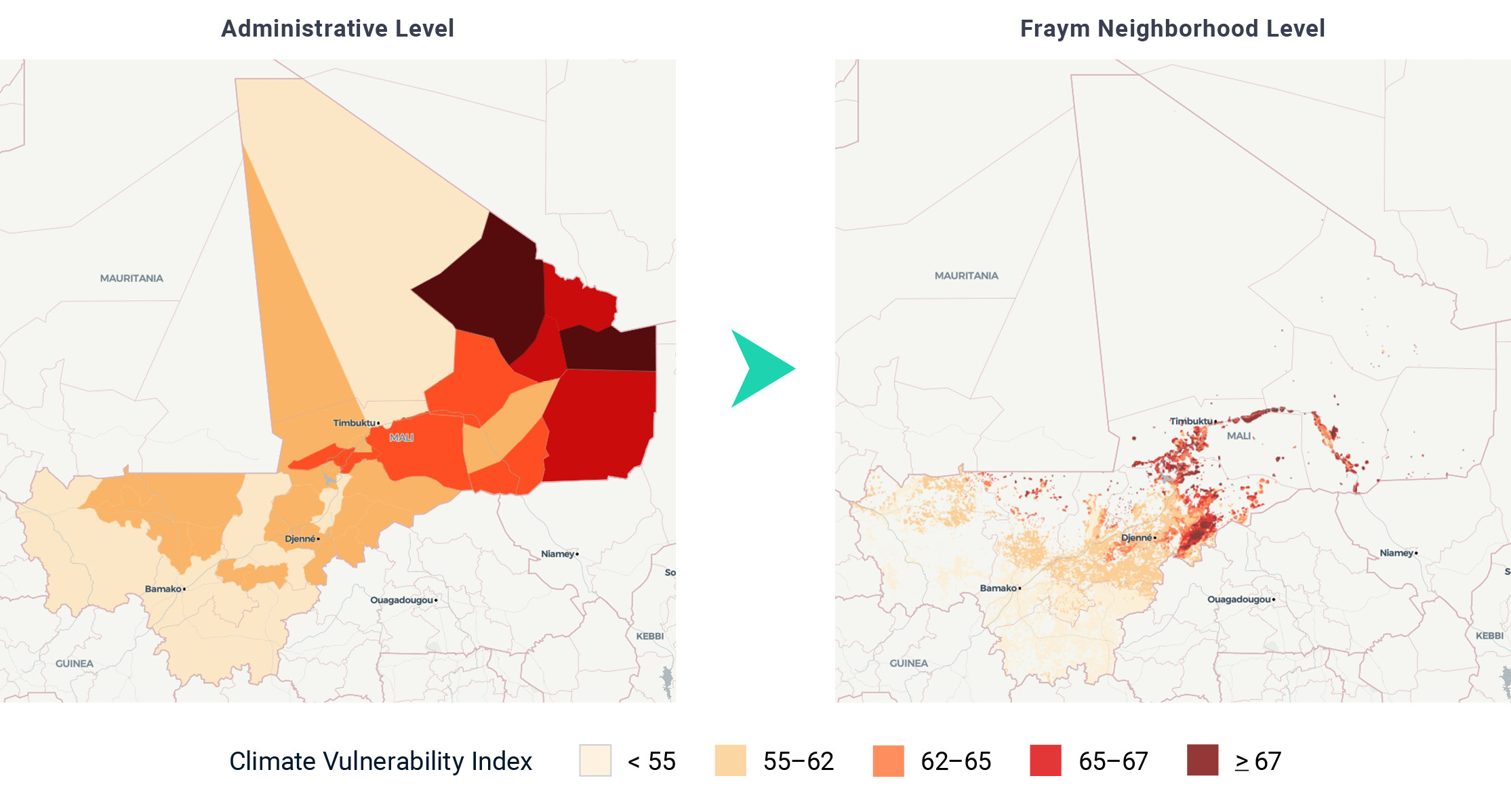How Climate and Gender Vulnerability Intersect in Malawi

Holistic Disaster Risk Reduction
As natural disasters rise with climate change, stakeholders from the regional to local levels are racing to prepare their neighborhoods. The data these stakeholders rely on for decision-making is often limited to administrative-level aggregates or environmental data on historical shocks, lacking the nuance and resolution needed to effectively design solutions that are tailored to individual communities’ challenges.
The Solution
Using the International Panel on Climate Change (IPCC) framework, Fraym produces a three-part approach to climate vulnerability to inform local-level disaster risk reduction (DRR) strategies:

Implementing Data for DRR
With a neighborhood-level understanding of risk, Fraym transforms administrative-level statistics into a nuanced portrait of communities’ resources, needs, and potential. We quantify and visualize who is at risk and where to advocate for DRR political leadership, policies, and legislation.
Fraym’s policy simulations take these baselines further by modeling the impact of specific government action. By combining detailed programmatic steps with Fraym’s population data, we can estimate policy outcomes on multiple dimensions including efficacy and public receptivity.
Zooming in on your area of interest, we can quickly identify places to target for intervention across various DRR approaches:

DRR requires localized, cross-cutting data on the populations that stakeholders are trying to reach. Climate shocks exacerbate long-standing, complex challenges specific to individual communities. Visualizing these vulnerabilities with new data reveals localized nuance that’s actionable, reliable, and targeted.